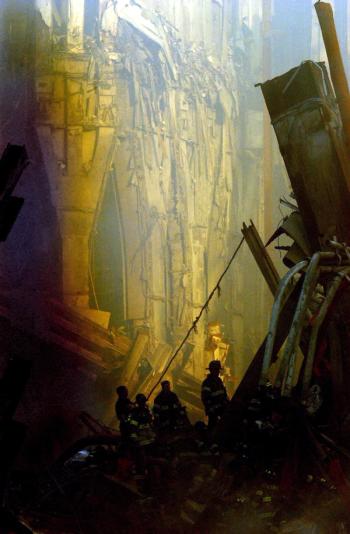
A Story of Crisis Negotiation
This crisis and hostage negotiator shares one his scariest moments from the field.
SCARIEST IN PSYCHIATRY
In this series, Scariest in Psychiatry, we asked clinicians about the scariest topic in mental health. What’s frightening, worrisome, or concerning in psychiatry? Here’s how they answered.
I encountered many challenges as the supervisor of the crisis and hostage negotiation team at Miami-Dade Police Department, responding to SWAT callouts. One of the scariest moments I ever had was when an individual held a baby upside-down by one ankle and threatened to kill him with a knife if we did not leave. I would like to share that story with you.
As we immediately began trying to talk with “Ed,” I happened to glance to my right and was horrified to see an unconscious woman sprawled out on the front lawn as if a strong wind had rolled through and knocked over a Halloween decoration. I told myself the tactical officers would rescue her, and I refocused my attention towards Ed. He became increasingly more agitated and screamed not to go close to his girlfriend on the lawn or he would kill the boy. As he was yelling, he apparently lost concentration and dropped the baby on his head. I could feel the palpable horror from the police officers standing behind the yellow inner perimeter tape. I realized each one of them wanted to shoot Ed.
The pressure ramped up as the situational demand to rescue the baby boy and his mother on the lawn became a singular demand. At that point, I became calm and focused on developing the plan to rescue the little boy and his mother. Ed has been snorting cocaine for more than 14 hours but had stopped; he would soon be crashing. However, Ed had picked up and resumed holding the baby upside-down, which is disturbing as he had already dropped him once. The lead negotiator attempted to cajole Ed to take the baby inside the house where they would both be safer. Ed eventually decided to go in the house. As he turned to enter the house, the baby slipped out of his hand and hit his head on the ground again.
We had to focus on the plan despite the disturbing visuals. As the lead negotiator continued to calmly talk to Ed, the tactical team entered the rear of the house and went into the living room. They confronted an unconscious Ed on the couch and took him into custody without incident.
When I entered the living room, I immediately noticed a tactical operator in full gear holding the baby as if he had a live grenade in his hands. He furtively looked around the room, and I could not help but notice how he locked upon me. Of course, I was the only doctor in the room, and he handed the baby boy to me. I quickly took this dazed little boy to the fire rescue truck.
As the baby was examined, I reflected on how violence is a form of communication—extreme and idiosyncratic. For most people, violence is the end-product of embarrassment or frustration. This violence is short-livid and typically not physical. Then there is pernicious violence, which is extreme and often fueled by rage and drugs. This is the violence that can instill fear into an entire society. This is the violence that cannot go unchecked.
The scariest violence is against children, as this wreaks the most trauma. In my lengthy experience treating childhood trauma, I have seen that when a child is traumatized, the effects are far-reaching. Specifically, when a child is the victim of violence, there is a wide ripple effect of those affected. These can include the child, parents, family members, first responders (whom, I can report, are profoundly affected), friends, schoolmates, teachers, neighbors, and the community at large. And while they may not always acknowledge their involvement, there are also the attending doctors, nurses, and hospital staff.
It is a daunting task to intervene, especially when the situation has the potential to traumatize others. Scary also comes to mind.
Newsletter
Receive trusted psychiatric news, expert analysis, and clinical insights — subscribe today to support your practice and your patients.













